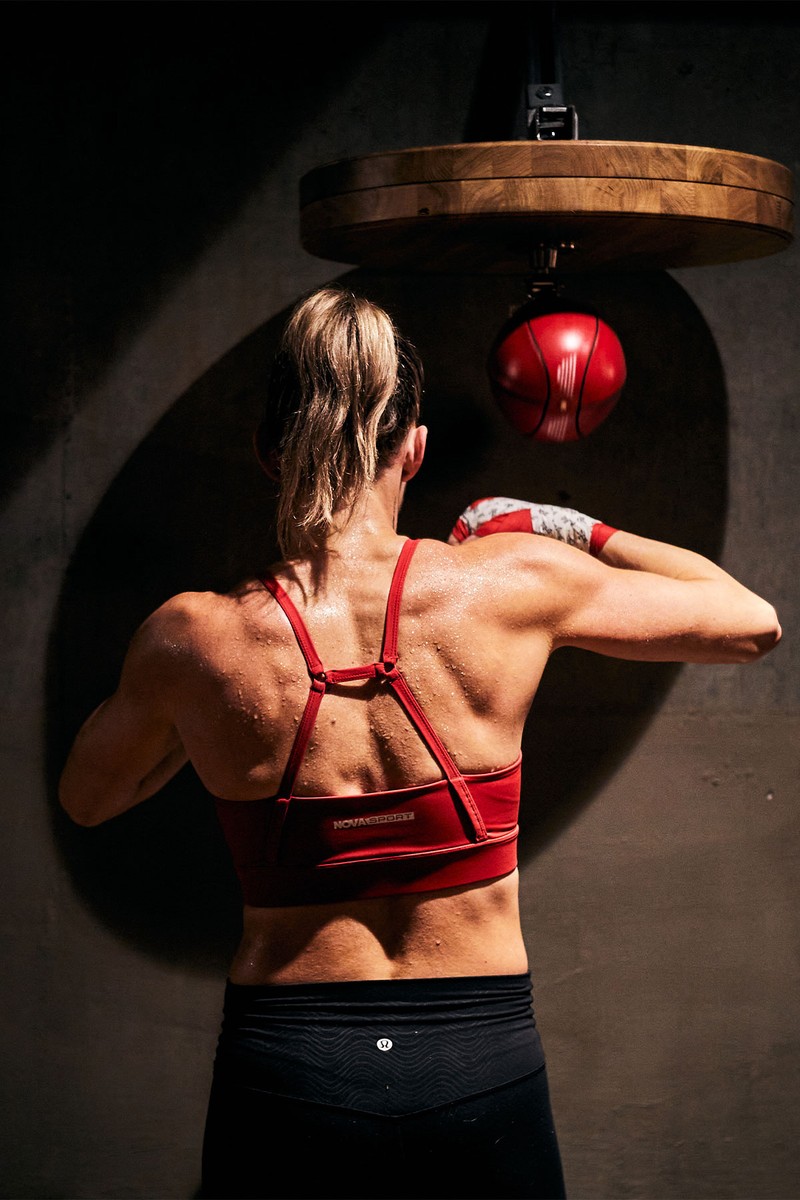10 Ways To Make The Most Of Your Next Boxing Workout
Treat It Like A Skill
“There’s no denying boxing is an incredible workout – it’s one of the easiest ways to achieve a lean body. Throwing a punch utilises various muscle groups, from your feet all the way up to your shoulders, and when this is repeated, you’re using more muscle groups than you would when running or spinning. However, there’s more to boxing than simply burning calories. Boxing is a craft that needs to be learned – so think of it as a hobby. I’ve lost count of the number of times clients have come in for a session and left exhausted, but totally hooked. As you hone your technique, you’ll not only become a better boxer, but you’ll learn self-defence skills and feel stronger in body and mind. Perfect your skill and the results will follow.” – Jay Jay Tilhos, gym manager at Bermondsey Boxing Club
Try It If You Find Cardio Boring
“If you’re someone who tires quickly of traditional forms of cardio – think running on a treadmill or spending hours on the cross trainer – boxing is a great alternative. It’s a varied way to raise your heart rate and incorporate resistance training into your week. Boxing is a full-body workout – it works 70% of your anaerobic system and 30% of your aerobic system as well as engaging your core and general body strength, so you’re ticking various boxes while having fun.” – Jay Jay
Do It For Your Mental Health
“Exercise is a known stress reliever. We know runners experience the phenomenon of a ‘runner’s high’ and boxing is no different. When working out on a punching bag, your brain kickstarts production of endorphins, your feel-good neurotransmitters. Punching also helps relieve physical muscle tension and increases alertness. Boxing takes you out of the day-to-day and puts you in the zone.” – Ruth Raper, TALA partner & boxing coach at Jab
Master The Punches
“Boxing comes down to six basic punches. One and two are the jab and the cross – these are both straight punches. The jab (one) is thrown with your front hand and is one of the weaker punches, often used to find your range and create openings for the more powerful punches. The cross (two) is thrown straight with your rear hand and is more powerful than the jab. Punches three and four are called hooks. Hooks are big power punches that are thrown to attack your opponent or the bag from the side. To do them well, you’ll need to focus on rotating your body to generate the necessary power. The final punches – five and six – are uppercuts. Your legs are the key drivers of these punches.” – Shane Collins, founder of Kobox
Use Your Hips
“Don’t rely solely on your upper body to do the job. Though boxers only use their hands to strike their opponent (or the bag), being able to effectively use your entire body will ensure you’re getting the most bang for your buck. If you throw your hips into a punch, it’ll become a full-body movement. Mechanically speaking, the hips generate the force, so they need to be strong. Building strength in the hips starts with the glutes, quads and hip flexors, so ensure you’re doing some form of strength work that focuses in these areas.” – Frances Katz, boxing coach at Box Centric
Start With Two Sessions A Week
“At an elite level, a boxer would train their skills (i.e. footwork and punches) at least three times a week, incorporate at least three conditioning sessions a week (e.g. running or sprints) to increase cardiovascular fitness and fit in two strength training sessions per week to maximise performance and prevent injury. While a beginner needn’t go to these extremes, the concept can be scaled back to ensure you’re seeing results and keeping your body strong. It’s a juggling act between the skills component, which contributes to direct improvements as a boxer, and the strength and conditioning side, which ultimately gives you the capacity to perform those skills. Aim for two well-rounded sessions that include a mixture of skills and fitness to reap the benefits.” – Sunni Torgman, boxing coach at Bermondsey Boxing Club
Drop Your Expectations
“One of the biggest mistakes people make when boxing is not allowing themselves to make mistakes. Over the years, I’ve noticed that many women who are attracted to a sport like boxing have high expectations of themselves, have a tendency to be self-critical and are tough on themselves when they get something wrong. This ends up impeding the skills acquisition process because mistakes and failures are crucial to the learning process. Remember, looking like a beginner is the cost of entry for mastering anything.” – Sunni
Invest In A Skipping Rope
“The beauty of boxing is that it’s varied – it’s not all about punching. Boxers regularly use skipping to improve their footwork and agility, as well as improving endurance. Skipping for ten minutes may not sound like much but is a fantastic, time-efficient workout that will also support your boxing goals. You can also try skipping as part of a HIIT workout. Short on time? Not all boxing sessions need to be long. Try an interval session by punching for ten seconds and then going all out for 20 seconds – repeat for three minutes. For a complete, bag-based workout, try 12 three-minute rounds, working through different punches and combinations.” – Ruth
Take A 360º Approach
“If you’re looking for results, what you do the other 23 hours in the day after you leave the gym matters. For example, aiming to get a decent number of steps in can make a difference, with studies showing 7,000 steps a day is the sweet spot for reaping the health benefits. At the same time, try to minimise stress where possible, which hinders recovery and decreases endurance, and try to incorporate some other form of resistance training in your week that isn’t boxing. This will help you build and preserve lean muscle mass to get that toned look.” – Sunni
Find A Studio
“Online training became popular during the pandemic, but to perfect your form and drill the right movements, expert feedback from a boxing coach is essential. Bad habits are easy to get into without feedback from a PT and are even harder to break, so consider finding a studio near you, whether it’s for a group class or one to one. If you live in London, you’re spoilt for choice – London is home to the most boxing gyms per capita in the UK. People are often intrigued by the authenticity of a traditional boxing ring but may feel intimidated if their aim isn’t to compete. Check out The Boxing House, which has gyms in north, south and central London – it makes boxing accessible and teaches boxing in its true form as a sport. There’s also Rathbone Boxing Club and Camden Boxing Club.” – Jay Jay
For more information or to book a class, visit BermondseyBoxingClub.com, Jab-Box.com, Kobox.co.uk & BoxCentric.co.uk.
DISCLAIMER: Features published by SheerLuxe are not intended to treat, diagnose, cure or prevent any disease. Always seek the advice of your GP or another qualified healthcare provider for any questions you have regarding a medical condition, and before undertaking any diet, exercise or other health-related programme.
DISCLAIMER: We endeavour to always credit the correct original source of every image we use. If you think a credit may be incorrect, please contact us at info@sheerluxe.com.




